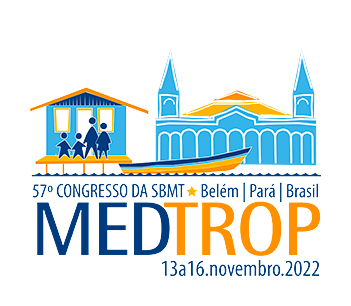Dados do Trabalho
Título
Descriptive analysis of 30 genomes of Leishmania infantum isolates in Middle-North Brazil by Next generation sequencing (NGS)
Introdução
Visceral leishmaniasis (VL) is a life-threatening disease caused by the protozoa Leishmania donovani and L. infantum. Likely, L. infantum was introduced in the New World by the Iberic colonizers. Due to recent introduction, the genetic diversity is low. Access to genomic information through the sequencing of Leishmania isolates allows the characterization of populations through the identification and analysis of variations. Population structure information may reveal important data on disease dynamics.
Objetivo(s)
To describe the genetic diversity of 30 Leishmania infantum isolates from Midlle-North, Brazil, by next generation sequencing (NGS).
Material e Métodos
Leishmania infantum isolates from patients were grown for DNA extraction. Isolated DNA was sequenced by MACROGEN, INC., Soeul, through the ILLUMINA Next Generation Sequencing (NGS) platform using the HiSeq2500 Sequencer and the TruSeq DNA PCR-Free Library Prep Kit. The reads from the sequencing were evaluated by quality and aligned in the reference genome of L. infantum JPCM5.
The variations were categorized accordingly to the genome region: the non-coding regions of the genome (intergenic, downstream and upstream to genes) and coding regions (exons); accordingly impact: high impact mutations as those affecting splice sites, start and stop codons; moderate impact as non-synonymous variations; low-impact as synonymous variations in coding regions and start and stop codons; and as modifier variations in non-coding region; and provided the basis for chromosomal ploidy and population structure analysis.
Resultados e Conclusão
The number of SNPs ranged from 903 to 1,498 on isolates. Most variations were seen in non-coding regions, with modifying impact. Chromosomes 12, 22 and 27 remained as those with larger number and chromosome 12 stood out one with highest number of variations. The ploidy number analysis showed aneuploid profile. Chromosomes 31 and 36 are tetrasomic, except for six isolates, which presented disomy for the same two chromosomes. The population structure analysis revealed the presence of two L. infantum populations identified in Teresina. There is low diversity between the isolates and the Iberic reference genome JPCM5. Further population genetics studies with a larger number of isolates should be performed in order to identify the genetic background associated with virulence and parasite ecology.
Palavras-chave
Leishmania infantum, Visceral Leishmaniasis, Next generation sequencing, genetic characterization
Área
Eixo 06 | Protozooses
Categoria
NÃO desejo concorrer ao Prêmio Jovem Pesquisador
Autores
Kátia Silene Sousa Carvalho, Wilson José Silva Júnior, Marcos Silveira Regueira Neto, Vladimir Costa Silva, Sérgio Sá Leitão Paiva Júnior, Valdir Queiroz Balbino, Dorcas Lamounier Costa, Carlos Henrique Nery Costa
